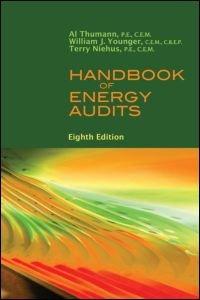Question
You have just been hired as a financial analyst for Lydex Company, a manufacturer of safety helmets. Your boss has asked you to perform a
| You have just been hired as a financial analyst for Lydex Company, a manufacturer of safety helmets. Your boss has asked you to perform a comprehensive analysis of the companys financial statements, including comparing Lydexs performance to its major competitors. The companys financial statements for the last two years are as follows:
| |||||||||||||||||||||||||||||||||||||||||||||||||||||||||||||||||||||||||||||||||||||||||||||||||||||||||||||||||||||||||||||||||||||||||||||||||
| Lydex Company Comparative Income Statement and Reconciliation | ||||
| This Year | Last Year | |||
| Sales (all on account) | $ | 15,780,000 | $ | 12,780,000 |
| Cost of goods sold | 12,624,000 | 9,585,000 | ||
|
|
|
|
| |
| Gross margin | 3,156,000 | 3,195,000 | ||
| Selling and administrative expenses | 1,794,000 | 1,572,000 | ||
|
|
|
|
| |
| Net operating income | 1,362,000 | 1,623,000 | ||
| Interest expense | 362,000 | 302,000 | ||
|
|
|
|
| |
| Net income before taxes | 1,000,000 | 1,321,000 | ||
| Income taxes (30%) | 300,000 | 396,300 | ||
|
|
|
|
| |
| Net income | 700,000 | 924,700 | ||
| Common dividends | 280,000 | 462,350 | ||
|
|
|
|
| |
| Net income retained | 420,000 | 462,350 | ||
| Beginning retained earnings | 910,000 | 447,650 | ||
|
|
|
|
| |
| Ending retained earnings | $ | 1,330,000 | $ | 910,000 |
| To begin your assigment you gather the following financial data and ratios that are typical of companies in Lydex Companys industry: |
| Current ratio | 2.3 | |
| Acid-test ratio | 1.0 | |
| Average collection period | 30 | days |
| Average sale period | 60 | days |
| Return on assets | 8.4 | % |
| Debt-to-equity ratio | .68 | |
| Times interest earned ratio | 5.7 | |
| Price-earnings ratio | 10 |
| 1. | You decide first to assess the companys performance in terms of debt management and profitability. Compute the following for both this year and last year: (Round your intermediate calculations and final percentage answers to 1 decimal place. i.e., 0.123 should be considered as 12.3%. Round the rest of the intermediate calculations and final answers to 2 decimal places.) |
| a. | The times interest earned ratio. |
| b. | The debt-to-equity ratio. |
| c. | The gross margin percentage. |
| d. | The return on total assets. (Total assets at the beginning of last year were $12,990,000.) |
| e. | The return on equity. (Stockholders equity at the beginning of last year totaled $7,947,650. There has been no change in common stock over the last two years.) |
| f. | Is the company's financial leverage positive or negative? |
| |||||||||||||||||||||||||||||||||||
| 2. You decide next to assess the companys stock market performance. Assume that Lydexs stock price at the end of this year is $78 per share and that at the end of last year it was $46. For both this year and last year, compute: (Round your intermediate calculations and final percentage answers to 1 decimal place. i.e., 0.123 should be considered as 12.3%. Round the rest of the intermediate calculations and final answers to 2 decimal places.) |
| a. | The earnings per share. |
| b. | The dividend yield ratio. |
| c. | The dividend payout ratio. |
| d. | The price-earnings ratio. |
| e. | The book value per share of common stock. |
| ||||||||||||||||||||||||||||||
| 3. You decide, finally, to assess the companys liquidity and asset management. For both this year and last year, compute: (Use 365 days in a year. Round your intermediate calculations and final answer to 2 decimal places.) |
| a. | Working capital. |
| b. | The current ratio. |
| c. | The acid-test ratio. |
| d. | The average collection period. (The accounts receivable at the beginning of last year totaled $1,590,000.) |
| e. | The average sale period. (The inventory at the beginning of last year totaled $1,950,000.) |
| f. | The operating cycle. |
| g. | The total asset turnover. (The total assets at the beginning of last year totaled $14,530,000.) |
| ||||||||||||||||||||||||||||||||||||||||
Step by Step Solution
There are 3 Steps involved in it
Step: 1

Get Instant Access to Expert-Tailored Solutions
See step-by-step solutions with expert insights and AI powered tools for academic success
Step: 2

Step: 3

Ace Your Homework with AI
Get the answers you need in no time with our AI-driven, step-by-step assistance
Get Started


